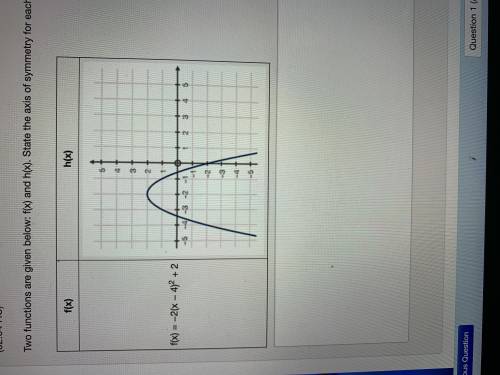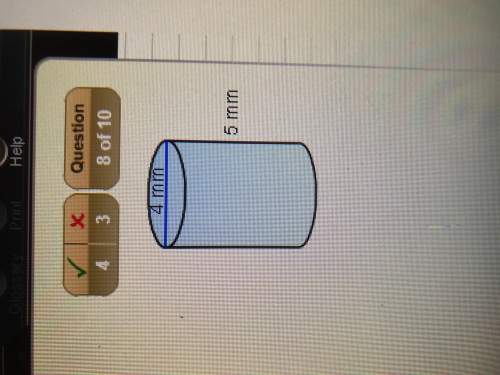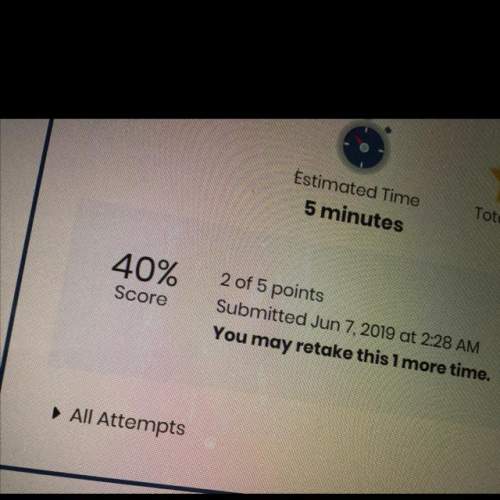
Mathematics, 01.07.2020 15:01 marahsenno
Two functions are given below: f(x) and h(x). State the axis of symmetry for each function and explain how to find it


Answers: 2


Other questions on the subject: Mathematics


Mathematics, 22.06.2019 01:00, cherri22
Arestaurant offers delivery for their pizzas. the total cost the customer pays is the price of the pizzas, plus a delivery fee. one customer pays $23 to have 2 pizzas delivered. another customer pays $59 for 6 pizzas. how many pizzas are delivered to a customer who pays $86?
Answers: 2

Mathematics, 22.06.2019 05:30, tashaylinm02
Draw a graph y=f(x) that matches the following characteristics. increasing on: -8< x< -4 and-1< x< 5. decreasing on : -4< x< -1. f(-8)=-5 and zeros at x=-6,-2,and 3. absolute maximum of 7 and absolute minimum of -5.
Answers: 1

Mathematics, 22.06.2019 06:00, bigblow
1. which answer is the solution set to the given inequality? 2x+6< 8 a. x e (-∞,1) b. x e [1,∞) c. x e (1,∞) d. x e (-∞,1] 2. which answer represents the given compound inequality in interval notation? x≥12 or x< -4 a. x e [-4, 12) b. x e (-∞, -4) u [12,∞) c. x e (-∞, -4] u (12,∞) d. x e (-4,12] 3. which answer is the solution set of the given compound inequality? 7> x+6 or x-2≥3 a. x e (-∞, 1) u [5,∞) b. x e (1, 5] c. x e (-∞, 1) ∩ [5,∞) d. x e [1,5) 4. which conjunction or disconjunction is equivalent to the given absolute value inequality? |x+3|> 12 a. x+3> 12 and x+3< -12 b. x+3< 12 and x+3> -12 c. x+3< 12 or x+3> -12 d. x+3> 12 or x+3< -12
Answers: 1
You know the right answer?
Two functions are given below: f(x) and h(x). State the axis of symmetry for each function and expla...
Questions in other subjects:





Mathematics, 10.05.2021 19:30



History, 10.05.2021 19:30






